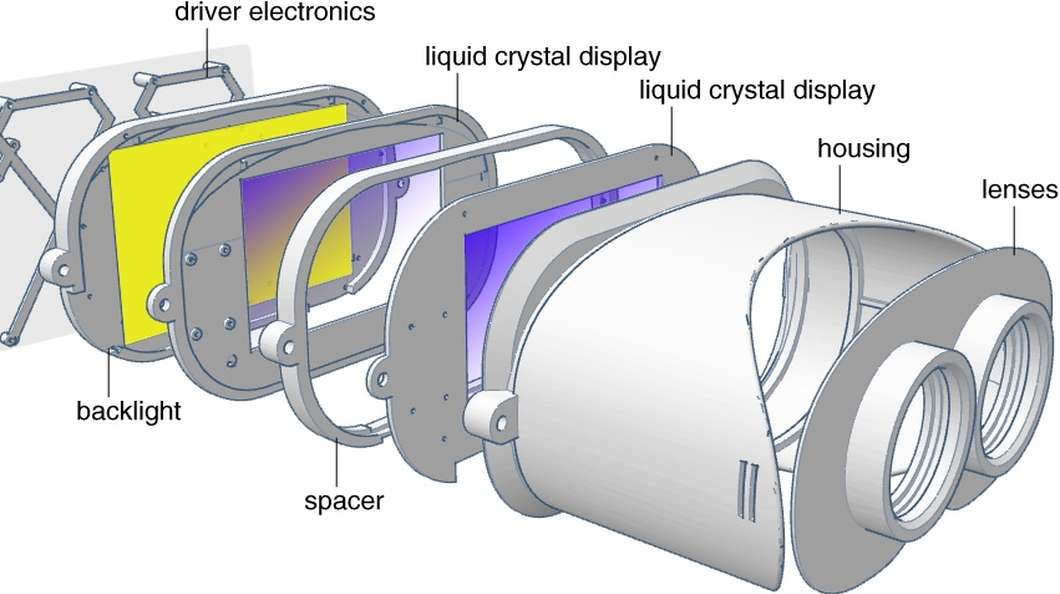
Not too long ago, virtual reality was more science fiction than science fact. Over the past couple of years, giant leaps have been made toward developing this robust platform. However, one challenge still stands in the way for greater consumer adoption: motion sickness.
But this may change quickly, as a team at Stanford University has developed a more realistic way of presenting virtual reality.
Although the virtual reality arena has some big names, such as the HTC Vive, Oculus Rift and Project Morpheus, along with Nokia’s 3D cameras creating VR content and experiences. But at the end of the day, human biology has the last say on what looks and feels good.
Researchers at the Stanford Computational Imaging Group have been working on making virtual reality a more natural experience. The current crop of VR displays create the impression of depth through stereoscopic means, where each eye is presented with separate images at slightly different angles. Although depth is simulated, the human eye is still focusing on a flat image. It’s the brain’s conflict of depth versus focus that can lead to strain, fatigue, headaches, and general simulator sickness from using such VR headsets.
Read more: Stanford research points to Lytro-like VR that kills motion sickness
The Latest on: Virtual reality
[google_news title=”” keyword=”Virtual reality” num_posts=”10″ blurb_length=”0″ show_thumb=”left”]
via Google News
The Latest on: Virtual reality
- New virtual reality experience arrives in Atlantaon April 27, 2024 at 12:57 pm
Guests will embark on a virtual journey that unveils ancient secrets and explores the intricate tombs of Pharaoh Khufu, followed by a visit to the Giza Necropolis, the famous Egyptian site home to the ...
- Milei, indigenous authors and virtual reality at Buenos Aires Book Fairon April 27, 2024 at 12:34 pm
Forty-eighth edition of the Feria Internacional del Libro de Buenos Aires opens at La Rural exhibition centre. Event runs from April 25 to May 13.
- Virtual reality could make seeing your favorite band less expensive, if these artists have their wayon April 27, 2024 at 6:06 am
Heavy-metal band Avenged Sevenfold and rapper T-Pain are among a growing number of artists who are using virtual reality to connect with their fans at a ...
- The incredible virtual reality technology preparing Jess Fox for Gold at the Paris Gameson April 26, 2024 at 5:00 pm
Jess Fox is giving herself every chance to win back-to-back Olympic Gold medals, travelling with a GoPro in her mouth to create a perfect virtual reality simulation of the Paris course. The unique ...
- 4 Tips for Navigating Virtual Reality Safelyon April 26, 2024 at 6:47 am
Virtual reality (VR) has taken major leaps forward in recent years. With the release of the Apple Vision Pro in early 2024, people are starting to realize how truly powerful this technology is and how ...
- Virtual reality headsets ease treatments for young patients at Advocate Children’s Hospitalson April 26, 2024 at 3:05 am
At Advocate Children’s Hospitals in Oak Lawn and Park Ridge, virtual reality systems are helping young patients deal with the discomfort of invasive treatments such as chemotherapy.
- Virtual Reality Training for Soccer Playerson April 25, 2024 at 1:44 pm
VR technologies have emerged as a transformative force in most sectors, including soccer. Virtual reality has changed player development, training techniques, and how fans engage with the game. Its ...
- MSNBC Will Use Virtual-Reality Supreme Court Bench During Trump Insurrection Argumentson April 25, 2024 at 6:10 am
The average person won’t be able to see the nation’s Supreme Court justices contemplating arguments Thursday over whether Donald Trump’s efforts to undo his loss in the 2020 election to President Joe ...
- Virtual reality can motivate people to donate to refugee crises regardless of politicson April 24, 2024 at 12:20 pm
Political conservatives who watched a documentary on Syrian refugees with a virtual reality headset had far more sympathy for the people depicted in the film than those who viewed the same film on a ...
- Mark Zuckerberg says Meta will offer its virtual reality OS to hardware companies, creating iPhone versus Android dynamicon April 22, 2024 at 11:16 am
The move will create new hardware devices that run the same operating system and software as Quest 3 and Quest Pro.
via Bing News











